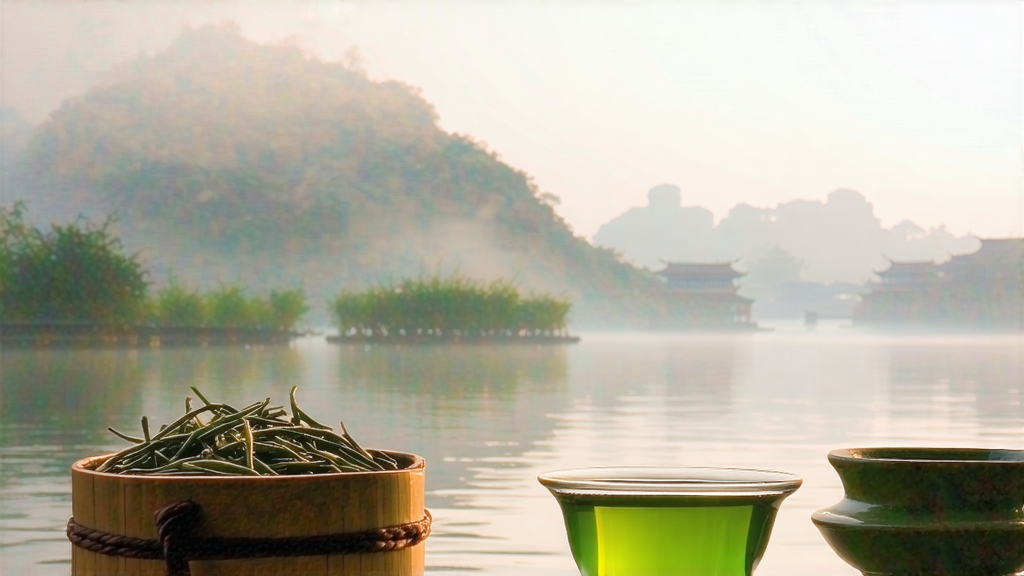
Among the pantheon of Chinese green teas, none carries the romance of lake mist and imperial whim quite like Biluochun. Its name, literally “Green Snail Spring,” hints at the tea’s tight spiral shape and the season in which it is plucked, yet the story behind the leaf is richer than any cup it yields. Originating in the Dongting mountain range of Jiangsu province, Biluochun began as a wild tea growing on fragrant fruit trees; local farmers noticed that the tender buds absorbed the perfume of apricot and plum blossoms, creating an infusion that tasted like spring itself. Legend credits Emperor Kangxi, who visited the region in 1699, with bestowing the poetic name after he found the tea “as curly as a snail and as green as jade.” From that moment, the once-obscure mountain tea entered the imperial tribute list and never left the hearts of Chinese connoisseurs.
Strictly speaking, Biluochun is not a single cultivar but a style of green tea whose legal provenance is protected to the Dongting Shan micro-zone. Within this terroir, two sub-gardens are recognized: Dongshan (East Mountain) and Xishan (West Mountain), each an island rising from Taihu Lake. Dongshan teas, grown on south-facing terraces of weathered granite, tend to show more orchid sweetness, while Xishan leaf, cooled by lake breezes, leans toward white peach and watercress freshness. Beyond geography, the cultivar itself matters; the traditional “Xiao Ye” (small-leaf) strain remains prized for its high amino acids, yet modern clonal selections such as “Dongting #7” are gaining ground for frost resistance and earlier budding. Regardless of clone, only the top two leaves and the unopened bud are deemed worthy of the name Biluochun, and plucking must finish before the Qingming festival when the spring energy is still concentrated in the hypersensitive tips.
The craft that turns these downy buds into fragrant spirals has remained almost unchanged for three centuries. Picking starts at dawn when mountain mist is still evaporating; the moisture acts as a natural protective film against mechanical bruising. Once back at the village workshop, the leaves are spread in bamboo trays no thicker than two centimeters and allowed to wither for precisely 45–60 minutes, long enough to reduce grassiness yet short enough to preserve the vivid jade color. The critical step is hand-firing in a wok maintained at 180 °C. A master tea maker tosses the leaves with a rhythmic clapping motion—fingers together, palm hollow—to create the signature spiral while deactivating enzymes within 3–4 minutes. The temperature is then dropped to 70 °C for another 20 minutes of rolling and drying, a phase locals call “three kneads, three dries.” When finished, each gram of Biluochun contains roughly 60 perfectly curled snails, silvery tips still visible under a magnifying glass, moisture content locked at 5 % to arrest further oxidation.
Brewing Biluochun is an exercise in restraint. Its cell walls are exceptionally delicate, so water hotter than 80 °C will literally cook the amino acids, turning the liquor bitter. The classical Jiangsu method uses a tall, thin glass called a “gai-bei” (lidded cup) so that the dance of sinking and rising leaves can be observed. Three grams—about a level teaspoon—are deposited at the bottom, then 150 ml of spring water is poured along the wall to minimize agitation. After 45 seconds the lid is tilted to decant the first infusion, a pale champagne-colored broth that smells of baby corn and lily. Subsequent steeps lengthen by 15-second increments, revealing layers of flavor: steamed bok choy, fresh chestnut, and a fleeting note of nectarine skin that the Chinese call “hui gan,” the returning sweetness that blooms at the back of the throat minutes after swallowing. A top-grade Biluochun will yield five immaculate infusions before the aroma collapses, each one translucent enough to read newsprint through.
To judge quality, connoisseurs employ four senses. Sight: dry leaf should be uniformly jade with ivory tips, never forest green (sign of late picking) or dull olive (over-fired). Touch: a gentle squeeze releases a cool, moist fragrance; if the curls shatter, the tea was overdried. Aroma: place 3